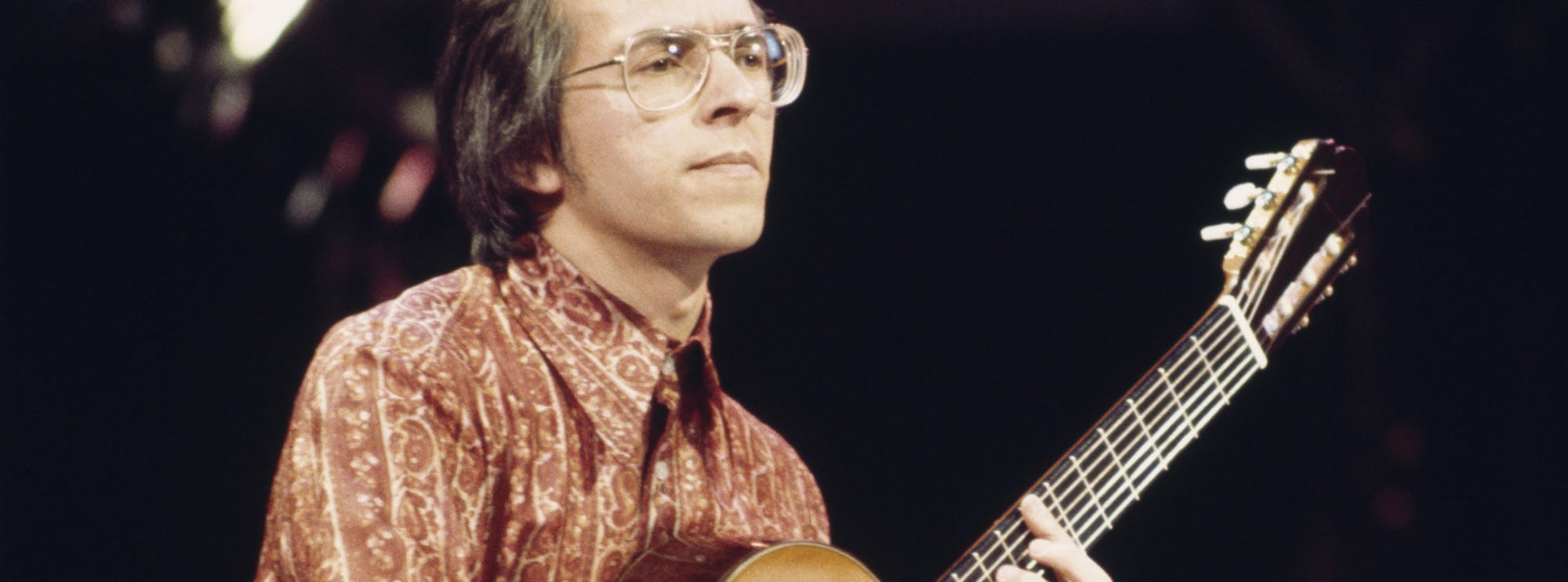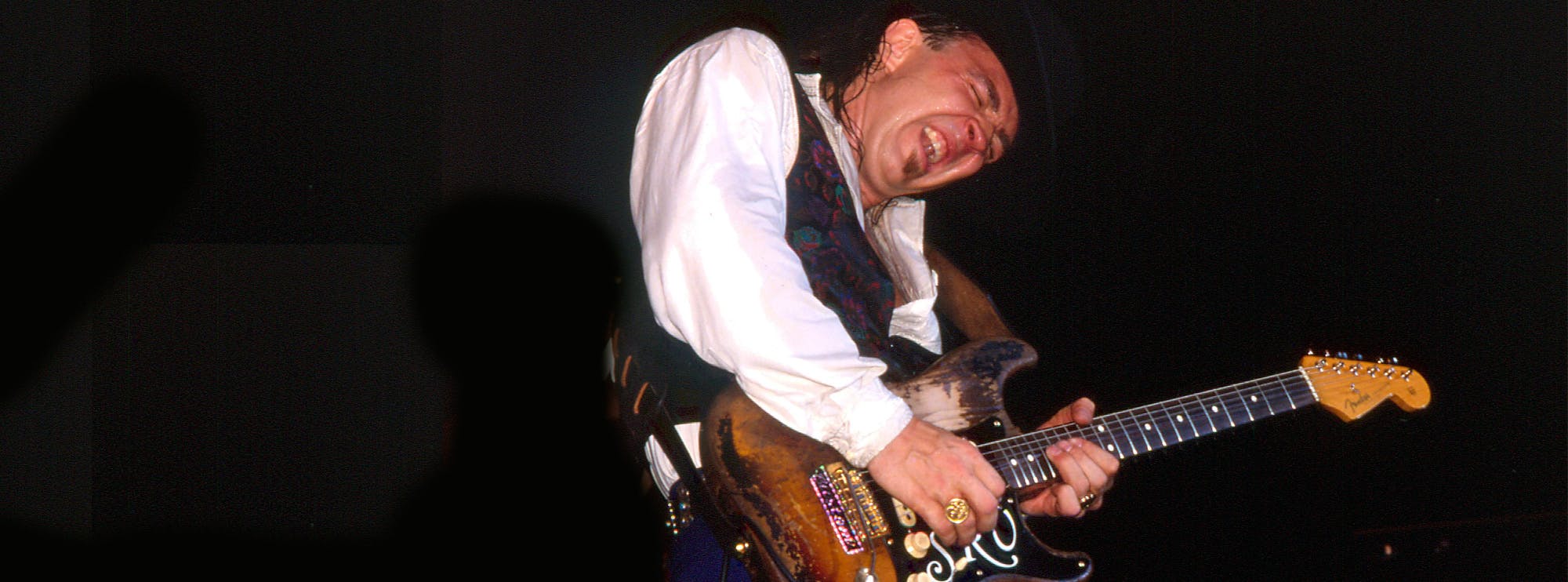Yellow (Electric & Acoustic Parts) by Coldplay
"Yellow" by Coldplay is an iconic song that has captivated audiences worldwide with its emotive lyrics, unique chord progressions, and rich layering of electric and acoustic guitars. This guitar lesson on "Yellow" delves deep into both the electric and acoustic guitar parts, helping you recreate the song's mesmerising sound. With a focus on specific guitar techniques, this lesson offers a thorough breakdown of the song's structure, rhythm, and style, giving guitarists of all levels the opportunity to master the track note for note. Dave Kilminster breaks down all the parts of this classic track in this exclusive Lick Library video tutorial.
Song Overview
Released in 2000 on Coldplay’s breakthrough album Parachutes, "Yellow" showcases the musical genius of guitarist Jonny Buckland. His playing is minimal yet impactful, with an emphasis on simplicity and melody over complexity. In "Yellow," Buckland blends dreamy arpeggios with atmospheric strumming, making it a perfect track for guitarists who want to explore both acoustic and electric guitar parts in a single song.
This lesson focuses on key techniques like alternate picking, arpeggios, and string bending, offering a balanced approach to both rhythm and lead playing. By learning these techniques, you’ll not only be able to play "Yellow" but also improve your overall guitar proficiency.
Acoustic Guitar Techniques
The acoustic guitar in "Yellow" provides a lush foundation for the song, with its open-string riffs and syncopated rhythms. Learning the acoustic parts will help you understand how to construct atmospheric textures with minimal chord changes, which is a key characteristic of Jonny Buckland’s playing style.
Arpeggios
In the intro and verses, Buckland utilises arpeggios to create a delicate, flowing sound. Playing arpeggios involves picking each note of a chord individually rather than strumming all the strings at once. This technique gives a song more depth and clarity, allowing each note to ring out clearly. Mastering arpeggios will improve your finger dexterity and help you develop a more expressive style.
Open-String Riffs
The use of open-string riffs in the acoustic parts adds a sense of openness and space to the song. Open strings create natural resonance and sustain, which are vital in creating the ethereal quality found in Coldplay’s music. Incorporating open-string riffs into your playing will give your chord progressions a fuller sound while enhancing the dynamic range of your music.
Electric Guitar Techniques
The electric guitar in "Yellow" is subtle yet powerful, adding an emotional punch through carefully executed techniques. This lesson focuses on mastering the balance between rhythm and lead playing, key to replicating Buckland’s signature sound.
String Bending
String bending is used throughout the electric parts to add a touch of emotion to the melody. By bending the string to a higher pitch, you can make your notes sing in a way that is both expressive and dynamic. String bending also enhances your pitch control and finger strength, giving your playing a more vocal quality.
Syncopated Rhythms
One of the defining features of the electric guitar in "Yellow" is its use of syncopated rhythms. This technique emphasises off-beats, which gives the song a driving yet laid-back feel. Syncopated rhythms can challenge your timing, making you more rhythmically aware and giving your playing a more sophisticated groove.
Vibrato
The vibrato technique is key to adding richness and texture to individual notes. By slightly varying the pitch of a note through rapid finger movements, vibrato creates a natural, warm tone. This technique adds emotional depth to solos and melodies, making it essential for expressive lead playing.
The Guitarist: Jonny Buckland
Jonny Buckland’s understated yet highly effective guitar work has been instrumental in shaping Coldplay’s sound. Influenced by bands like U2 and The Stone Roses, Buckland often focuses on melodic, atmospheric guitar lines rather than technical showmanship. His ability to blend rhythm and lead parts seamlessly makes him an ideal guitarist for songs that require emotion and precision in equal measure.
Buckland’s playing in "Yellow" exemplifies his ability to create a powerful impact with relatively simple techniques. His minimalist approach makes the song both accessible to beginners and deeply rewarding for more advanced players, especially those interested in mastering melody-driven playing.
Why Learn These Techniques?
Mastering the guitar techniques in "Yellow" offers several key benefits for guitarists:
- Arpeggios improve finger dexterity and hand coordination, enabling you to play intricate chord-based melodies.
- String bending and vibrato give you better control over pitch and expression, essential for emotive lead guitar playing.
- Open-string riffs enhance your understanding of dynamics and chord resonance, helping you create fuller-sounding progressions.
- Syncopated rhythms challenge your timing and help you build a stronger rhythmic foundation, which is crucial for playing in a band or solo setting.
These techniques not only allow you to recreate "Yellow" with precision but also provide you with tools that can be applied to a wide variety of songs and styles.
Guitar Techniques in This Lesson
Here’s a list of the key guitar techniques featured in the lesson for "Yellow," along with internal links for further exploration:
By mastering these techniques, you'll be well-equipped to play not only "Yellow" but also a range of other songs that incorporate similar elements. Whether you're a beginner looking to enhance your skills or an advanced player fine-tuning your technique, this lesson provides a comprehensive guide to recreating Coldplay's classic hit.
About The Tutor
Tutor Profile
Dave Kilminster
Dave Kilminster shot to fame when he won the original Guitarist of the Year contest in 1991. In recent years Dave was on the road with Roger Waters as lead guitarist and vocalist in the extraordinary global staging of Dark Side of the Moon. Fans know Dave from his work...




